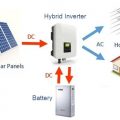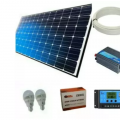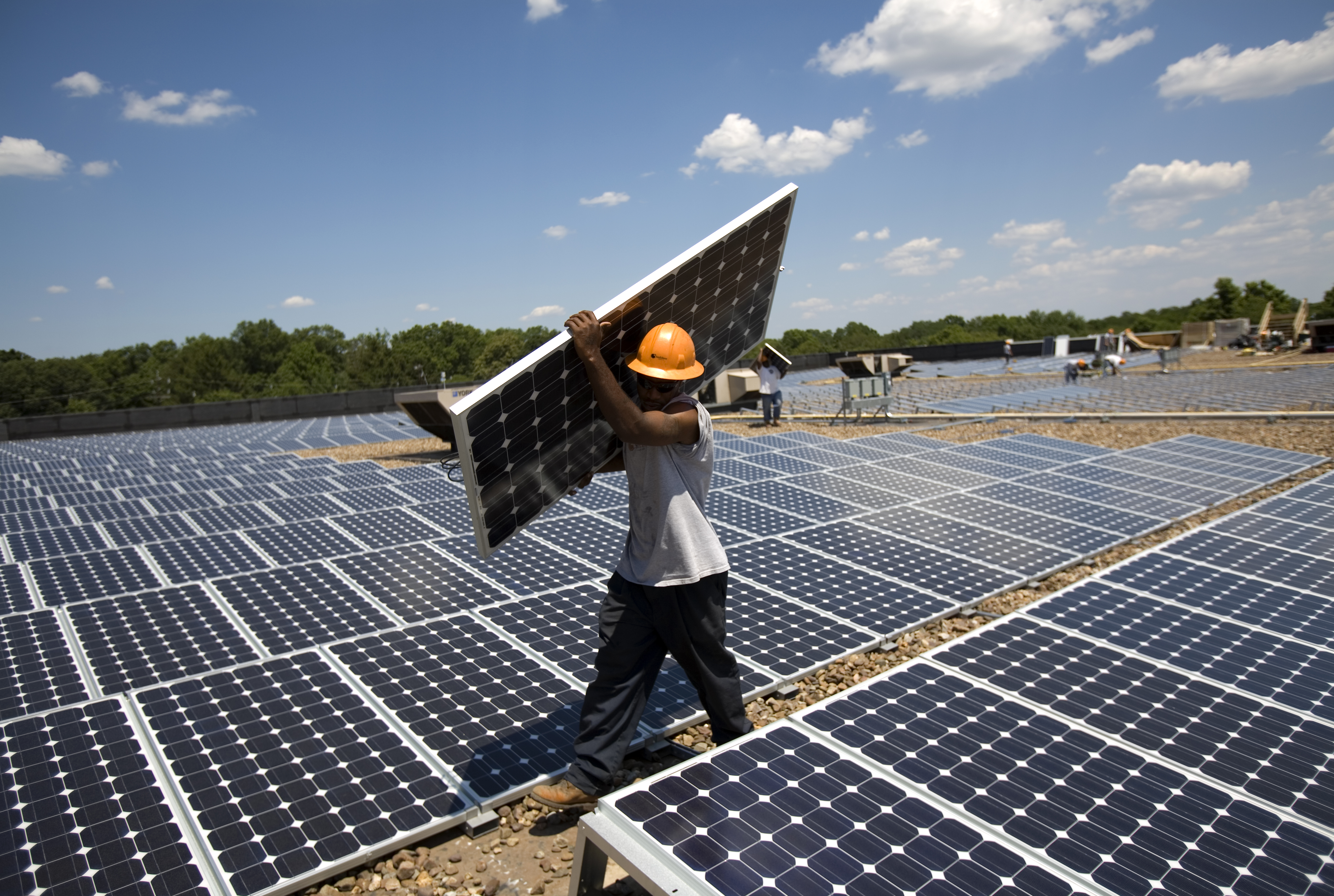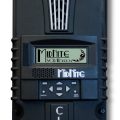- September 29, 2020
- Posted by: tech newsAfrica
- Category: Alternative Energy- Solar and Inverter, Blog, Others, Softwares, Solar and Inverter Free Training, Technologies
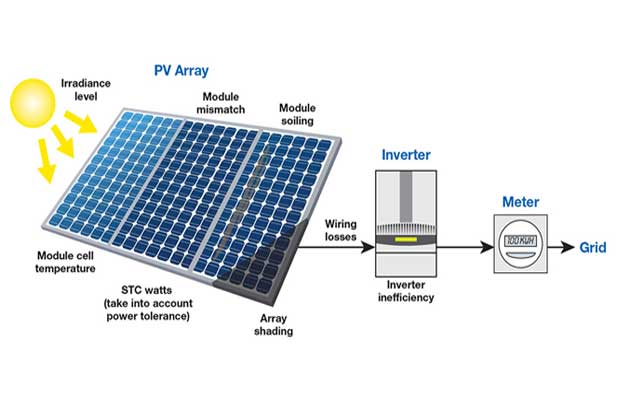
| Calculation on How to Design Solar PV System | ||||||||
| What is solar PV system? | ||||||||
| Solar photovoltaic system or Solar power system is one of renewable energy system which uses PV modules to
convert sunlight into electricity. The electricity generated can be either stored or used directly, fed back into grid line or combined with one or more other electricity generators or more renewable energy source. Solar PV system is very reliable and clean source of electricity that can suit a wide range of applications such as residence, industry, agriculture livestock, etc. |
||||||||
| Major system components | ||||||||
| Solar PV system includes different components that should be selected according to your system type, site location and
applications. The major components for solar PV system are solar charge controller, inverter, battery bank, auxiliary energy sources and loads (appliances). |
||||||||
| • PV module – converts sunlight into DC electricity. | ||||||||
| • Solar charge controller – regulates the voltage and current coming from the PV panels going to | ||||||||
| battery and prevents battery overcharging and prolongs the battery life. | ||||||||
| • Inverter – converts DC output of PV panels or wind turbine into a clean AC current for AC | ||||||||
| appliances or fed back into grid line. | ||||||||
| • Battery – stores energy for supplying to electrical appliances when there is a demand. | ||||||||
| • Load – is electrical appliances that connected to solar PV system such as lights, radio, TV, computer, | ||||||||
| refrigerator, etc. | ||||||||
| • Auxiliary energy sources – is diesel generator or other renewable energy sources. | ||||||||
| Solar PV system sizing | ||||||||
| 1. Determine power consumption demands | ||||||||
| The first step in designing a solar PV system is to find out the total power and energy consumption of all loads that need
to be supplied by the solar PV system as follows: |
||||||||
| 1.1 Calculate total Watt-hours per day for each appliance used. | ||||||||
| Add the Watt-hours needed for all appliances together to get the total Watt-hours per day which | ||||||||
| must be delivered to the appliances. | ||||||||
| 1.2 Calculate total Watt-hours per day needed from the PV modules. | ||||||||
| Multiply the total appliances Watt-hours per day times 1.3 (the energy lost in the system) to get | ||||||||
| the total Watt-hours per day which must be provided by the panels. | ||||||||
| 2. Size the PV modules | ||||||||
| Different size of PV modules will produce different amount of power. To find out the sizing of PV module, the total peak
watt produced needs. The peak watt (Wp) produced depends on size of the PV module and climate of site location. We have to consider “panel generation factor” which is different in each site location. For Thailand, the panel generation factor is 3.43. To determine the sizing of PV modules, calculate as follows: |
||||||||
| 2.1 Calculate the total Watt-peak rating needed for PV modules | ||||||||
| Divide the total Watt-hours per day needed from the PV modules (from item 1.2) by 3.43 to get | ||||||||
| the total Watt-peak rating needed for the PV panels needed to operate the appliances. | ||||||||
| 2.2 Calculate the number of PV panels for the system | ||||||||
| Divide the answer obtained in item 2.1 by the rated output Watt-peak of the PV modules available | ||||||||
| to you. Increase any fractional part of result to the next highest full number and that will be the | ||||||||
| number of PV modules required. | ||||||||
| Result of the calculation is the minimum number of PV panels. If more PV modules are installed, the system will perform
better and battery life will be improved. If fewer PV modules are used, the system may not work at all during cloudy periods and battery life will be shortened. |
||||||||
| 3. Inverter sizing | ||||||||
| An inverter is used in the system where AC power output is needed. The input rating of the inverter should never be
lower than the total watt of appliances. The inverter must have the same nominal voltage as your battery. |
||||||||
| For stand-alone systems, the inverter must be large enough to handle the total amount of Watts you will be using
at one time. The inverter size should be 25-30% bigger than total Watts of appliances. In case of appliance type is motor or compressor then inverter size should be minimum 3 times the capacity of those appliances and must be added to the inverter capacity to handle surge current during starting. |
||||||||
| For grid tie systems or grid connected systems, the input rating of the inverter should be same as PV array rating to
allow for safe and efficient operation. |
||||||||
| 4. Battery sizing | ||||||||
| The battery type recommended for using in solar PV system is deep cycle battery. Deep cycle battery is specifically
designed for to be discharged to low energy level and rapid recharged or cycle charged and discharged day after day for years. The battery should be large enough to store sufficient energy to operate the appliances at night and cloudy days. To find out the size of battery, calculate as follows: |
||||||||
| 4.1 Calculate total Watt-hours per day used by appliances. | ||||||||
| 4.2 Divide the total Watt-hours per day used by 0.85 for battery loss. | ||||||||
| 4.3 Divide the answer obtained in item 4.2 by 0.6 for depth of discharge. | ||||||||
| 4.4 Divide the answer obtained in item 4.3 by the nominal battery voltage. | ||||||||
| 4.5 Multiply the answer obtained in item 4.4 with days of autonomy (the number of days that you | ||||||||
| need the system to operate when there is no power produced by PV panels) to get the required | ||||||||
| Ampere-hour capacity of deep-cycle battery. | ||||||||
| Battery Capacity (Ah) = Total Watt-hours per day used by appliances x Days of autonomy | ||||||||
| (0.85 x 0.6 x nominal battery voltage) | ||||||||
| 5. Solar charge controller sizing | ||||||||
| The solar charge controller is typically rated against Amperage and Voltage capacities. Select the solar charge controller to match the voltage of PV array and batteries and then identify which type of solar charge controller is right for your application. Make sure that solar charge controller has enough capacity to handle the current from PV array. | ||||||||
| For the series charge controller type, the sizing of controller depends on the total PV input current which is delivered to
the controller and also depends on PV panel configuration (series or parallel configuration). |
||||||||
| According to standard practice, the sizing of solar charge controller is to take the short circuit current (Isc) of the PV
array, and multiply it by 1.3 |
||||||||
| Solar charge controller rating = Total short circuit current of PV array x 1.3 | ||||||||
| Remark: For MPPT charge controller sizing will be different. (See Basics of MPPT Charge Controller) | ||||||||
| Example: A house has the following electrical appliance usage: | ||||||||
| One 18 Watt fluorescent lamp with electronic ballast used 4 hours per day. | ||||||||
| One 60 Watt fan used for 2 hours per day. | ||||||||
| One 75 Watt refrigerator that runs 24 hours per day with compressor run 12 hours and off 12 hours. | ||||||||
| The system will be powered by 12 Vdc, 110 Wp PV module. | ||||||||
| 1. Determine power consumption demands | ||||||||
| Total appliance use = (18 W x 4 hours) + (60 W x 2 hours) + (75 W x 24 x 0.5 hours) | ||||||||
| = 1,092 Wh/day | ||||||||
| Total PV panels energy needed = 1,092 x 1.3 | ||||||||
| = 1,419.6 Wh/day. | ||||||||
| 2. Size the PV panel | ||||||||
| 2.1 Total Wp of PV panel capacity | ||||||||
| needed = 1,419.6 / 3.4 | ||||||||
| = 413.9 Wp | ||||||||
| 2.2 Number of PV panels needed = 413.9 / 110 | ||||||||
| = 3.76 modules | ||||||||
| Actual requirement = 4 modules | ||||||||
| So this system should be powered by at least 4 modules of 110 Wp PV module. | ||||||||
|
To Read More About Solar PV, Types Click Here |
||||||||
| 3. Inverter sizing | ||||||||
| Total Watt of all appliances = 18 + 60 + 75 = 153 W | ||||||||
| For safety, the inverter should be considered 25-30% bigger size. | ||||||||
| The inverter size should be about 190 W or greater. | ||||||||
| 4. Battery sizing | ||||||||
| Total appliances use = (18 W x 4 hours) + (60 W x 2 hours) + (75 W x 12 hours) | ||||||||
| Nominal battery voltage = 12 V | ||||||||
| Days of autonomy = 3 days | ||||||||
| Battery capacity = [(18 W x 4 hours) + (60 W x 2 hours) + (75 W x 12 hours)] x 3 | ||||||||
| (0.85 x 0.6 x 12) | ||||||||
| Total Ampere-hours required 535.29 Ah | ||||||||
| So the battery should be rated 12 V 600 Ah for 3 day autonomy. | ||||||||
| 5. Solar charge controller sizing | ||||||||
| PV module specification | ||||||||
| Pm = 110 Wp | ||||||||
| Vm = 16.7 Vdc | ||||||||
| Im = 6.6 A | ||||||||
| Voc = 20.7 A | ||||||||
| Isc = 7.5 A | ||||||||
| Solar charge controller rating = (4 strings x 7.5 A) x 1.3 = 39 A | ||||||||
| So the solar charge controller should be rated 40 A at 12 V or greater. | ||||||||
To learn More About Charge Controller, Click here

